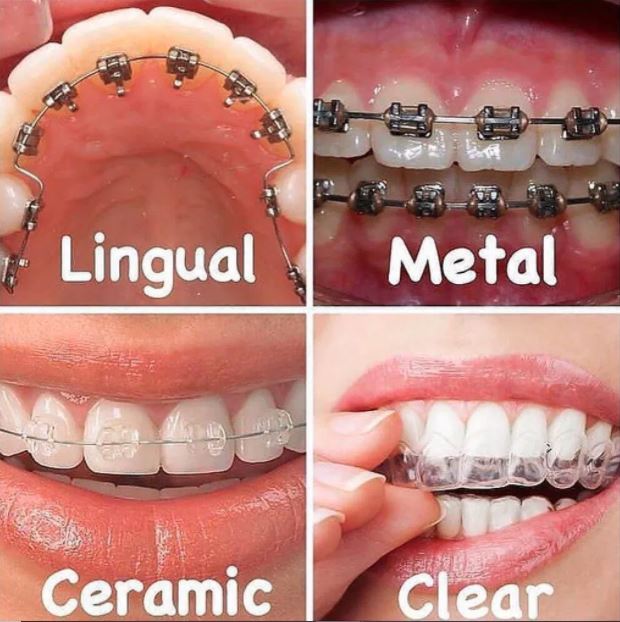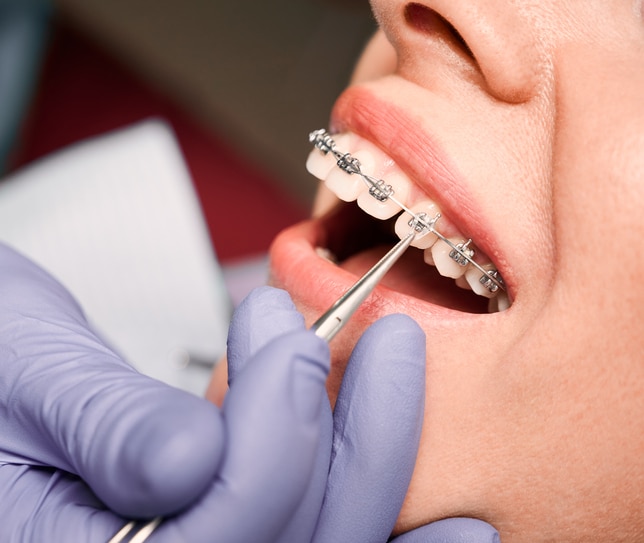What Establishes Cumming Braces and Aligners Besides Other Orthodontic Treatments
Comprehensive Overview to Orthodontics Treatments for Fixing Dental Misalignments
Recognizing the complexities of each treatment, including their mechanisms, benefits, and prospective drawbacks, is crucial in making educated choices about one's orthodontic treatment. As we navigate through the comprehensive guide to orthodontic procedures for fixing oral imbalances, the detailed details of each method will certainly unravel, losing light on the course towards a unified and useful dental alignment.
Orthodontic Procedures Overview

Along with clear aligners and traditional braces, orthodontists may additionally recommend various other interventions like headwear, palatal expanders, or retainers to attend to particular alignment concerns (cumming orthodontics). These procedures are customized to every person's special needs and might include a mix of therapies to attain the desired outcomes. Regular adjustments and surveillance are essential parts of orthodontic therapy to make sure progression is on track and to make any type of essential adjustments along the method. By undertaking orthodontic procedures, people can not just accomplish a straighter smile however also boost their overall oral health and wellness and function.
Standard Braces: How They Work
When taking into consideration orthodontic treatments for dental imbalances, conventional dental braces attract attention as a tried and true approach for correcting teeth placing. Standard dental braces are composed of braces, wires, and bands that function together to use constant pressure on the teeth, slowly relocating them into the desired placement. The brackets are connected to the teeth using an unique adhesive, and the wires are threaded with the braces. By adjusting the stress of the cables, orthodontists can manage the instructions and force related to each tooth, guiding them right into appropriate alignment in time.
As pressure is used to the teeth via the dental braces, the bone bordering the teeth is improved to support the brand-new tooth positions. Patients will certainly need routine adjustments at the orthodontist's office to make sure the braces proceed to use the correct stress for reliable teeth activity.
Invisible Aligners: Disadvantages and pros
Unseen aligners provide a very discreet and hassle-free option to standard braces for fixing dental imbalances. These clear, tailor-made trays are basically unnoticeable when used, making them an enticing alternative for people seeking an extra visually pleasing orthodontic treatment. One of the primary benefits of undetectable aligners is their removability, enabling simpler maintenance of oral hygiene compared to standard braces. People can remove the aligners before eating or brushing their teeth, minimizing the threat of food obtaining stuck in the device and simplifying the cleaning procedure.

Surgical Orthodontic Options
Surgical treatments in orthodontics present viable alternatives for resolving intricate oral imbalances that might not be effectively fixed with conventional orthodontic treatments. While undetectable aligners and traditional braces can correct several orthodontic issues, certain instances call for surgical treatment to achieve optimal results. visit Surgical orthodontic options are normally recommended for extreme malocclusions, substantial jaw inconsistencies, and instances where the underlying bone structure needs alteration to attain correct positioning.
One usual medical orthodontic treatment is orthognathic surgery, which entails rearranging the jaws to remedy practical problems such as trouble talking or chewing. This surgical treatment is usually carried out in partnership with an orthodontist that aids align the teeth prior to and after the treatment. Surgical orthodontics may likewise involve procedures to reveal affected teeth, get rid of excess periodontal tissue, or improve the jawbone to create an extra harmonious facial account.
Prior to considering medical orthodontic options, people undertake a detailed evaluation to identify the need and prospective advantages of such interventions. orthodontics. While surgical treatment might seem overwhelming, it can significantly boost both the feature and visual appeals of the smile in situations where conventional orthodontic therapies drop short
Retainers and Post-Treatment Treatment

Post-treatment care includes complying with the orthodontist's instructions vigilantly. This may consist of correct oral hygiene techniques, attending follow-up visits, and using the retainers as suggested. Failing to adhere to post-treatment treatment guidelines can cause relapse, where the teeth progressively relocate back in the direction of their initial settings. Constant retainer wear, good oral health, and routine oral check-ups are necessary for maintaining the outcomes attained via dentist around here orthodontic surgery and guaranteeing the long-lasting stability of the remedied dental placement.
Verdict
In conclusion, orthodontic treatments supply various options for dealing with oral misalignments. Surgical orthodontic options are readily available for a lot more severe imbalances. In general, orthodontic procedures can successfully boost oral health and visual look.
As we navigate with the detailed guide to orthodontic treatments for remedying dental misalignments, the intricate details of each approach will certainly unravel, losing light on the course toward a useful and harmonious dental positioning. - invisalign
One of the most typical orthodontic treatments is the usage of braces, which are composed of metal brackets and cords that apply mild stress to slowly change teeth right into the desired setting.When considering orthodontic treatments for oral misalignments, typical braces stand out as a reliable method for remedying teeth placing. Furthermore, unnoticeable aligners might not be ideal for intricate orthodontic problems that require even more significant teeth motion, as they are generally suggested for moderate to modest cases. Retainers are tailor-made orthodontic gadgets created to hold teeth in their fixed settings after the conclusion of orthodontic therapy.